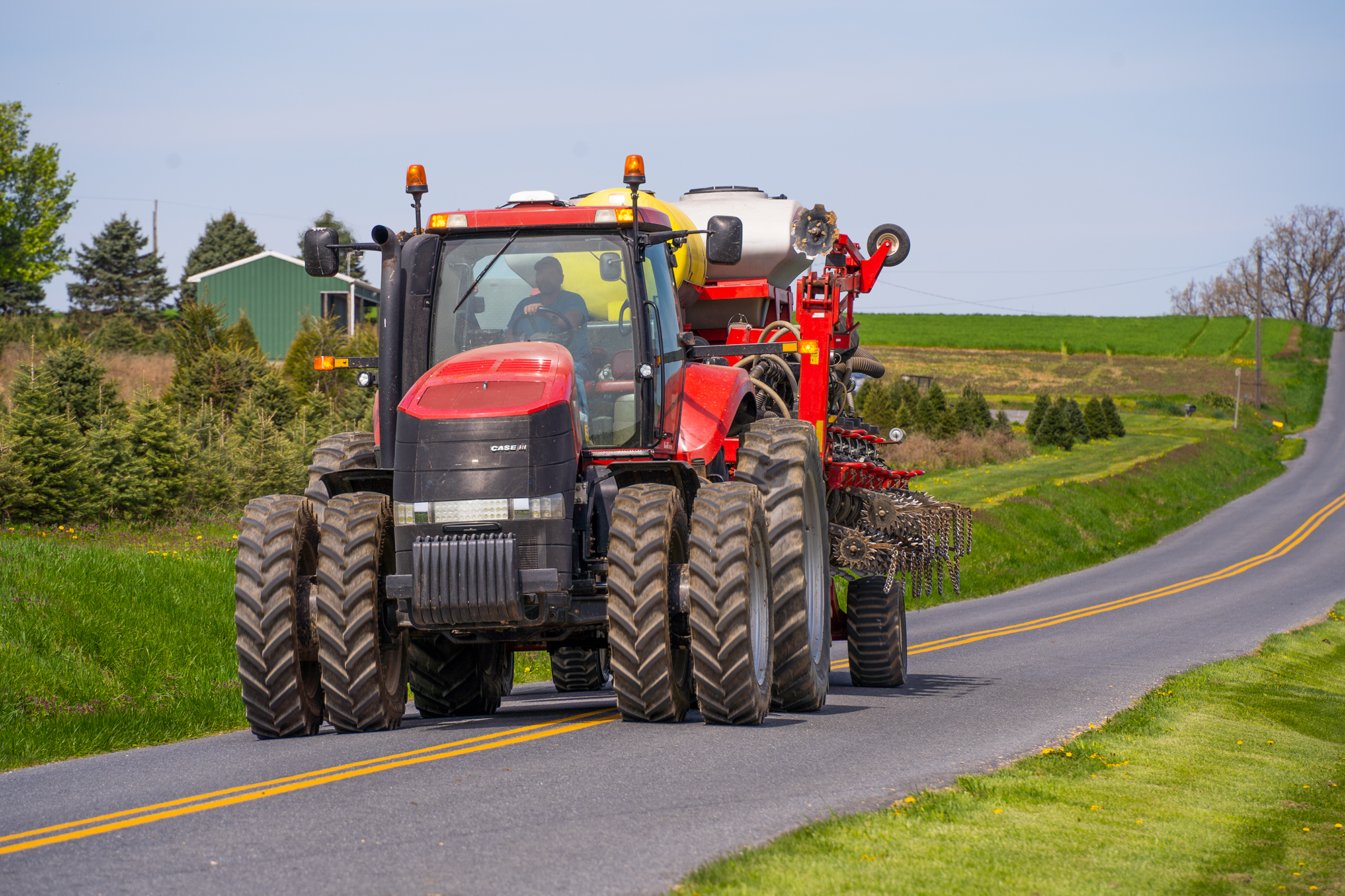
All News >> Digital Newsletters
Watch for Farm Equipment on Rural Roads
April 14, 2025
Written By Adam Buckallew
Spring fieldwork and planting have begun in many areas, which means farm equipment is on the move. During this time of year, both motorists and farmers should be extra cautious on rural roads.
Modern farm machinery is safer and more visible than in the past, but it’s also larger and weighs far more than passenger vehicles. Collisions with farm equipment can result in serious injuries.
Rear-end crashes are common because farm equipment typically travels at 20–25 mph or less, leaving drivers little time to react. Another frequent danger is left-turn collisions, which occur when a motorist tries to pass equipment that’s turning left. Never assume a slow-moving tractor is pulling off the road—allow the operator to complete their turn safely.
Stay alert, slow down, and share rural roads responsibly.
Here are some tips for farmers and motorists as they share the road during planting season.
For motorists:
- Be aware – Watch for slow-moving farm equipment. It’s important to remember that farm equipment does not behave like cars and trucks when it comes to speed, turning or breaking.
- Practice good driving habits – Avoid texting or talking on the cell phone so you can devote 100 percent of your attention to the task at hand, safe driving.
- Slow down – Reduce speed, especially in agricultural areas where farm equipment may enter or leave the roadway.
- Keep your distance – Drivers should always follow at a safe distance behind any vehicles they may be following.
- Pass with care – Pass only where and when it is safe and legal to do so and where you have good visibility. Make sure farm equipment is not swinging wide to make a left turn.
- Be patient – Many farmers will pull over in heavy traffic conditions but can only do so in areas where it is safe.
For farmers:
- SMV Emblems – Make sure all farm equipment is clearly marked with slow-moving vehicle (SMV) emblems and they are clearly visible. Replace faded or missing SMV emblems with new ones.
- Proper lighting – Ensure all farm equipment lighting, reflectors and flashers are in working order and employ them while traveling on the roadway. To increase visibility, consider installing retrofit lighting on older model tractors and other farm equipment.
- Turn signals – Use turn signals or hand signals if your tractor is not equipped to communicate your intentions when making turns.
- Escort vehicles – Consider using escort or pilot vehicles (front and back) when traveling long distances or moving oversized equipment. These vehicles should have some marking (orange flags or yellow/ amber lighting) to identify their intended purpose.
- Keep shoulders clear – Do not park trucks along the sides of the roadways while servicing field equipment or unloading grain.
- Travel routes – Plan your route and travel time. Although fewer farm vehicles are on rural roads today compared to a decade ago, farmers are tending more acreage further away from the farmstead and traveling greater distances to work their fields. If possible, select a route and travel time that avoids high-traffic areas during peak traffic times. Avoid moving farm equipment at dawn or dusk or during times of poor visibility.
- Pre-travel checklist – Conduct a pre-travel equipment check to avoid breakdowns on the road. Make sure tires are properly inflated, and safety chains are attached if towing farm implements, trailers, or other attachments.
The safety tips mentioned above are just a few of the many actions farmers and motorists can take to make our roadways safer for everyone to travel. Whether you are driving a car, truck or a slow-moving tractor, remember that safety should be everyone’s priority while behind the wheel.


